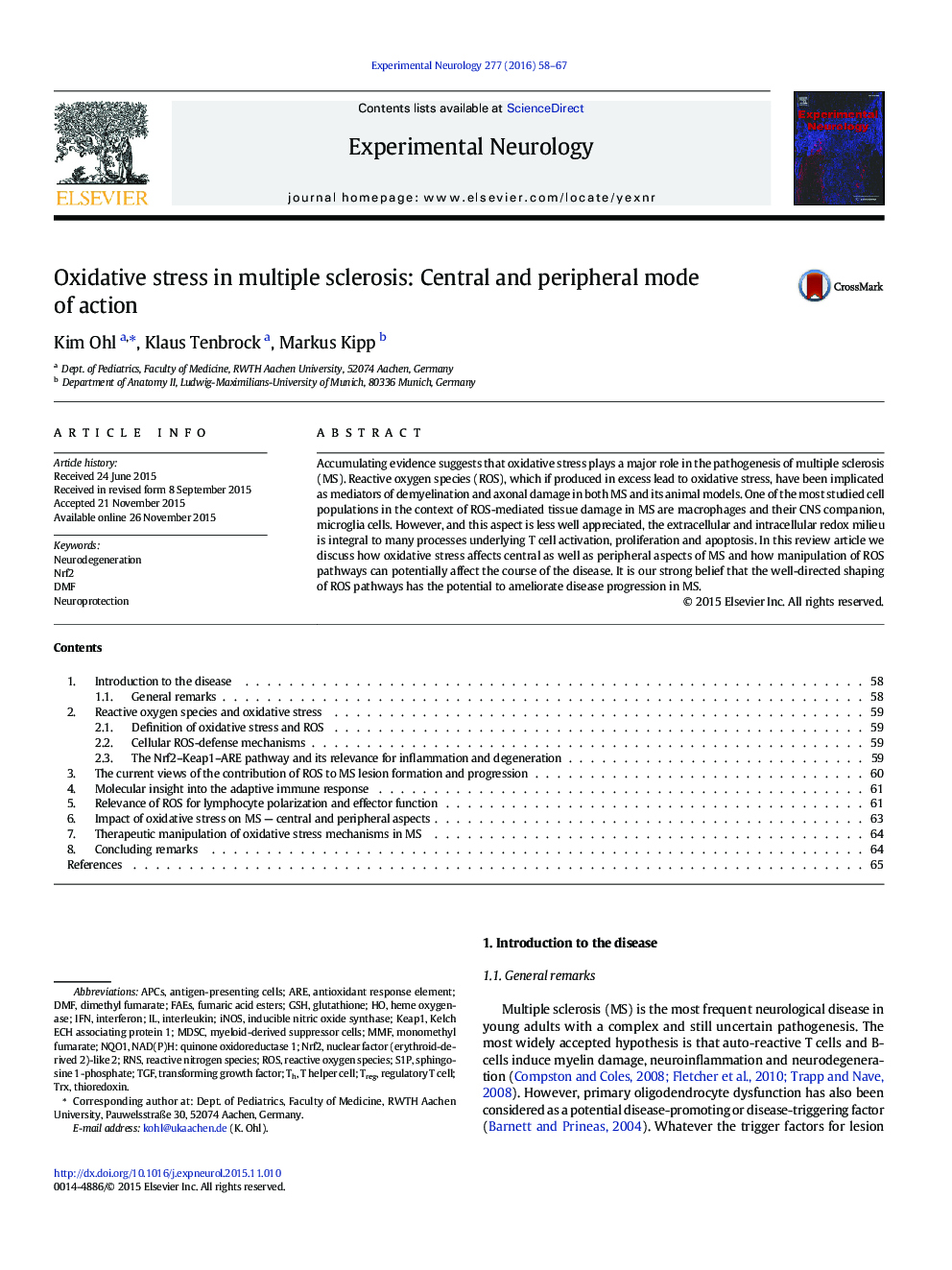| کد مقاله | کد نشریه | سال انتشار | مقاله انگلیسی | نسخه تمام متن |
|---|---|---|---|---|
| 6017108 | 1580158 | 2016 | 10 صفحه PDF | دانلود رایگان |
- Reactive oxygen species play a major role in the pathogenesis of multiple sclerosis and contribute to demyelination in the CNS.
- Redox states influence T cells, which are activated in the periphery and are strongly associated with MS pathogenesis.
- We summarize central and peripheral mode of actions of ROS in MS.
- We discuss treatment options, which target oxidative stress pathways, with regard to central and peripheral effects.
Accumulating evidence suggests that oxidative stress plays a major role in the pathogenesis of multiple sclerosis (MS). Reactive oxygen species (ROS), which if produced in excess lead to oxidative stress, have been implicated as mediators of demyelination and axonal damage in both MS and its animal models. One of the most studied cell populations in the context of ROS-mediated tissue damage in MS are macrophages and their CNS companion, microglia cells. However, and this aspect is less well appreciated, the extracellular and intracellular redox milieu is integral to many processes underlying T cell activation, proliferation and apoptosis. In this review article we discuss how oxidative stress affects central as well as peripheral aspects of MS and how manipulation of ROS pathways can potentially affect the course of the disease. It is our strong belief that the well-directed shaping of ROS pathways has the potential to ameliorate disease progression in MS.
Journal: Experimental Neurology - Volume 277, March 2016, Pages 58-67
